 |
| Sritanjung Park, one of the faces of Banyuwangi (Blok-a.com) |
Nestled at the easternmost tip of Java, Banyuwangi is an emerging travel destination that offers a unique blend of natural wonders, rich cultural traditions, and culinary delights.
For international tourists seeking an off-the-beaten-path experience in Indonesia, Banyuwangi serves as a perfect introduction to East Java’s rugged landscapes, pristine national parks, and diverse local customs.
Central to Banyuwangi’s appeal is Kawah Ijen (Ijen Crater), one of the world’s most famous volcanic sites known for its electric-blue flames and turquoise sulfur lake.
This guide will provide an in-depth overview of Banyuwangi’s attractions, geography, cultural heritage, and practical travel information—including how to reach Banyuwangi from Jakarta, Bali, and Surabaya—ensuring a smooth and memorable journey.
Geographic Location and Natural Surroundings
Banyuwangi occupies a strategic position on the eastern edge of Java Island, bordered by the Bali Strait to the east, the Indian Ocean to the south, and the lush volcanic highlands to the north and west.
Its proximity to Bali makes Banyuwangi an ideal stopover for travelers who wish to explore Java before or after visiting the more touristic island.
Banyuwangi is nestled between majestic natural features—flanked by Mount Raung’s volcanic ridges, the iconic Ijen crater with its electric-blue flames, and lush mountain forests that merge into three national parks.
Coastal and Marine Environments
To the east lies the Bali Strait, where ferries shuttle daily between Banyuwangi and Gilimanuk (Bali).
The coastline features secluded coves and white-sand beaches such as Pulau Merah and Watu Dodol, perfect for surfing, snorkeling, or simply watching a breathtaking sunset.
Highland Landscapes
Northwest of the city center, volcanic slopes ascend toward Mount Ijen (2,443 meters above sea level).
Nearby hills and ridges host coffee plantations, spice gardens, and hiking trails that reveal panoramic views of Java’s interior.
Rainforest and Biodiversity
Banyuwangi’s upland forests are home to a wealth of flora and fauna, including primates, hornbills, and endemic orchids.
Mist-laden woodlands near Meru Betiri and Alas Purwo National Parks are especially prized by wildlife enthusiasts.
Main Attraction: Kawah Ijen
Kawah Ijen stands out as Banyuwangi’s marquee attraction. The volcano’s crater lake is renowned for its vivid turquoise waters and the famous “blue fire” phenomenon—an otherworldly electric-blue glow produced by sulfuric gases igniting at night.
Key points for visitors include:
Blue Fire Trek
-
Timing: Most trekking tours depart from the base camp in Paltuding around 1:00 AM, aiming to reach the crater rim by sunrise (approximately 4:30–5:00 AM). The blue flames are best observed in total darkness before dawn.
-
Difficulty: The trek is moderately challenging—about 3 kilometers uphill from base camp, taking 1.5–2 hours. Proper hiking shoes, warm clothing, headlamps, and face masks (to filter sulfur fumes) are mandatory.
-
Safety: Always use a certified local guide. Sulfur deposits can be slippery, and gas concentrations can fluctuate. Guides supply gas masks and know the safest routes.
Crater Rim and Lake
-
After witnessing the blue fire, hikers ascend to the crater rim to see the emerald-green lake. On clear mornings, the sight of smoke plumes against the sunrise is unforgettable.
-
Visitors can view local sulfur miners descending into the crater on foot—often carrying baskets loaded with solidified sulfur (20–50 kg per trip). While empathetic toward their arduous labor, well-meaning tourists are advised to maintain distance for safety.
Post-Trek Relaxation
-
Upon descent, consider a short break at the 30-meter-high Paltuding waterfall or soak in natural hot springs (such as Lempuyang and Klirip springs), which are approximately 1–1.5 hours’ drive from Paltuding.
Tourism Potential and Additional Attractions
Beyond Ijen, Banyuwangi offers a wealth of experiences:
-
Beaches & Coastal Activities
-
Pulau Merah Beach: Famous for its solitary offshore rock “Gunung Merah” and world-class surf breaks. Beginners can take lessons from local surf schools.
-
Watu Dodol Beach: Known for dramatic rock formations and a long pier stretching into the Indian Ocean—ideal for photography.
-
-
Unique Natural Phenomena
-
Sukamade Turtle Conservation (Meru Betiri National Park): Witness green and leatherback turtles nesting on the black-sand coastline between March and September. Nighttime excursions allow visitors to see hatchlings released to the sea.
-
Savannah at Baluran National Park: Referred to as “Little Africa,” this park boasts open grassland plains teeming with banteng (wild Indonesian cattle), deer, and various bird species against a backdrop of Mount Baluran.
-
-
Waterfalls & Hiking Trails
-
Jagir Waterfall (Jagir Villet): A multi-tiered waterfall surrounded by lush greenery; accessible via a short hike from the village of Gendoh.
-
Lider Waterfall : located in Lider Hamlet, Sumberarum Village, Songgon District, Banyuwangi, is famous as one of the highest waterfalls in Banyuwangi, with a height of about 60-70 meters.
-
Cultural and Culinary Riches
Banyuwangi is often called “The City of Festival” due to its numerous cultural celebrations—such as the Gandrung Sewu (meaning “a thousand tanguers”), which is a large-scale dance performance honoring the rice goddess Dewi Sri.
Traditional arts to explore include:
-
Gandrung Dance: A sensual, flowing dance performed by female dancers dressed in vibrant costumes. Shows can be attended in downtown Banyuwangi or during festivals.
-
Osing Culture: The Osing people are the indigenous ethnic group of Banyuwangi. Their unique dialect, traditional music (such as gamelan), and handicrafts (ikat weaving and batik) can be discovered at local craft centers and village homestays.
Culinary Highlights
-
Nasi Tempong: A signature dish featuring steamed rice with assorted side dishes—tempeh, tofu, vegetables—spiced with a fiery raw chili mixture called sambal tempong.
-
Sego Cawuk: Coconut rice served with tempeh krispi (crispy tempeh), fried anchovies, sambal, and fresh vegetables.
-
Rujak Soto: A unique fusion combining fruit rujak (spicy-sweet fruit salad) with light beef broth (soto), creating a delightful contrast of flavors.
-
Pecel Pitik: Pecel Pitik is a traditional dish from Banyuwangi, made from young native chicken roasted over a fire. The dish is often part of the Osing tribe's traditional rituals and is served with white rice in the shape of a tumpeng.
Three National Parks: Alas Purwo, Meru Betiri, and Baluran
-
Alas Purwo National Park
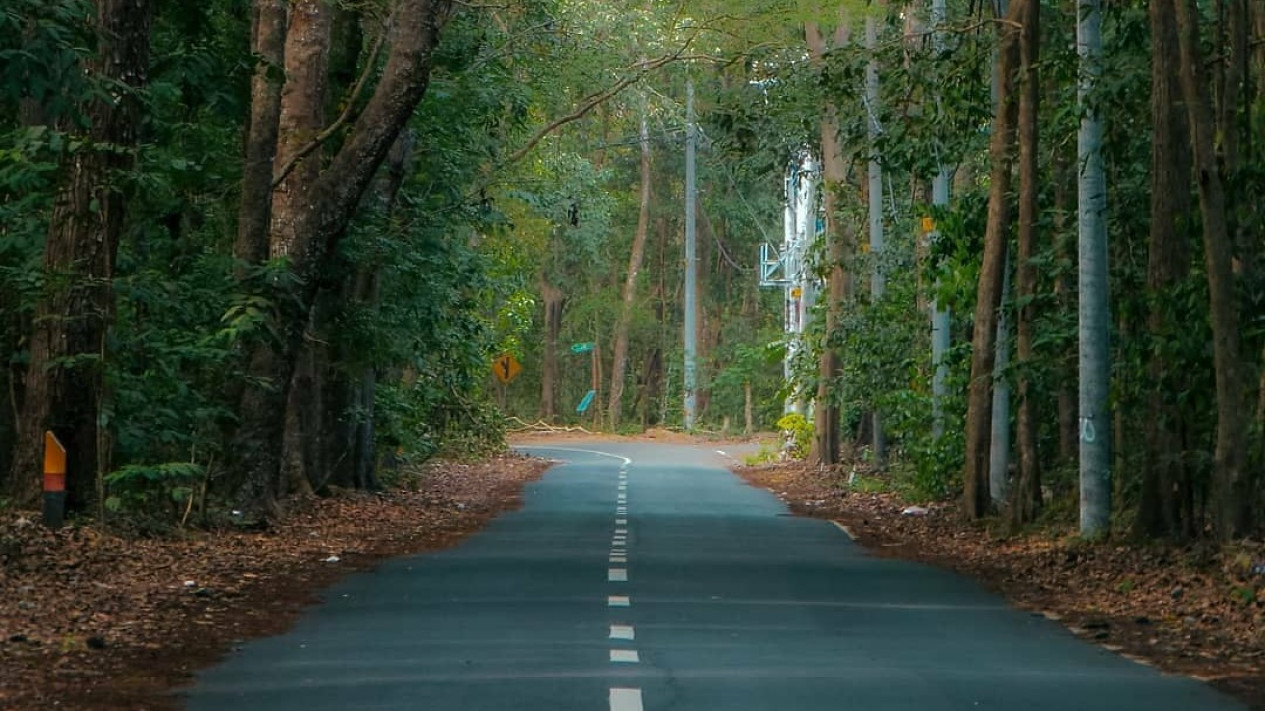
Alas Purwo National Park, Banyuwangi (Viva.co.id) -
Ecosystem: One of Java’s oldest forests, comprising lowland teak, casuarina woodlands, and savannah areas.
-
Wildlife: Banteng (Javanese wild cattle), rusa deer, Javan lutung (monkeys), and numerous bird species.
-
Highlights: Explore various places of interest, ranging from beaches, savannas, forests, and historical sites. There is G-Land, one of the surfing spots with the highest waves in the world; Sadengan Savannah with its vast grassland scenery; Trianggulasi Beach with its beautiful sunset view; Pancur Beach with its river forming a shower and large rocks; see turtle breeding at Ngagelan Beach; sacred sites such as the sacred Pura Luhur Giri Salaka, Kawitan Site, or Istana Cave.
-
-
Meru Betiri National Park
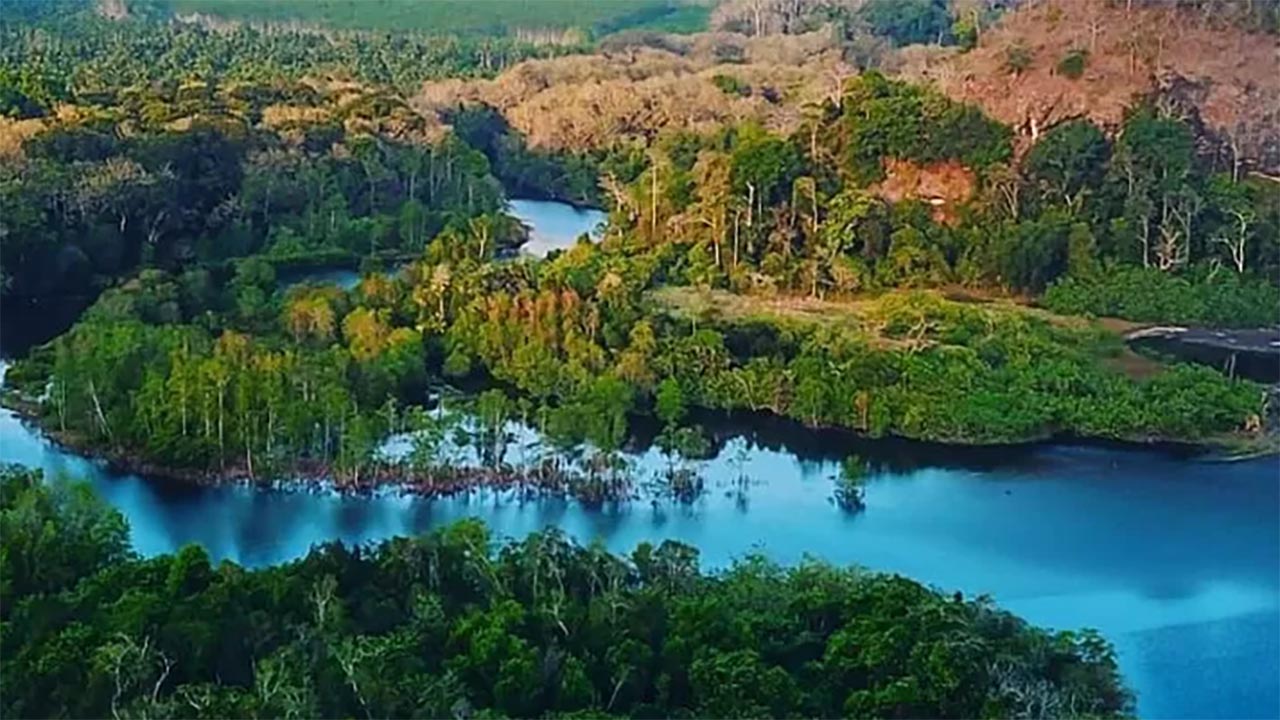
Meru Betiri National Park, Banyuwangi (Radarmukomuko.disway.id) -
Ecosystem: Stretching from coastal lowlands to steep mountains, this park features mangrove forests, swamps, and montane rainforests.
-
Wildlife: Critically endangered Javan tiger (officially declared extinct but historic), primates like the slow loris, and nesting turtles at Sukamade.
-
Highlights: Enjoy white sand beaches, interact with local fishermen, and take in the natural beauty of beaches such as Rajegwesi, Green Bay and see turtles laying their eggs in Sukamade.
-
-
Baluran National Park

Baluran National Park, near Banyuwangi (RadarMadura) -
Ecosystem: A rare example of savannah on Java—open grasslands dotted with acacia and evergreen trees.
-
Wildlife: Banteng, deer, wild boar, Java mouse-deer, and more than 200 bird species.
-
Highlights: Bekol Savannah viewpoint, Bama Beach (border between forest and sea), sunrise and sunset photography.
-
Each park provides opportunities for guided wildlife tours, birdwatching, jungle trekking, and photography.
A robust network of local guides ensures traveler safety and enriches the experience with in-depth ecological knowledge.
Transportation and Accessibility
By Land
From Surabaya (East Java’s Provincial Capital)
-
Distance: Approximately 280 kilometers by road (around 7–8 hours’ drive).
-
Bus/Minivan: Regular executive and economy buses depart from Purabaya (Bungurasih) Bus Terminal in Surabaya to Banyuwangi bus terminals (Ketapang or Brawijaya). Tickets can be purchased at the terminal or through Indonesian online ticketing platforms.
-
Train: The Eastern Line (Surabaya Gubeng to Banyuwangi City) takes about 8.5–9 hours. Trains include economy, business, and executive classes. Departures are frequent, especially at night, allowing passengers to sleep en route. Banyuwangi City Station is approximately 8 kilometers from downtown.
From Jakarta (Java’s National Capital)
-
By Bus: Direct executive buses operate from Kampung Rambutan Terminal (East Jakarta) to Brawijaya Terminal (Banyuwangi). The journey lasts roughly 17–18 hours, often overnight, with intermediate stops in major cities such as Semarang and Surabaya.

Brawijaya Terminal, Banyuwangi, is the main terminal serving inter-city buses. (RadarBanyuwangi) -
By Train: There is the Blambangan Ekspres Train operating from Pasar Senen Station in Jakarta with a direct route to Ketapang Station, Banyuwangi, with Executive and Economy class services with a travel time of 16 hours 30 minutes.
-
By Flight (Preferred Option): Fly from Soekarno-Hatta International Airport (CGK) to Banyuwangi International Airport (BWX) with direct flights or transit in Surabaya (SUB). Flight time: CGK-SUB (~1 hour 30 minutes); SUB–BWX (~1 hour); CGK-BWX (~1 hour 45 minutes). Available airlines include Garuda Indonesia, Citilink and Super Jet. This is the fastest and most convenient option, especially for international travelers.
By Sea
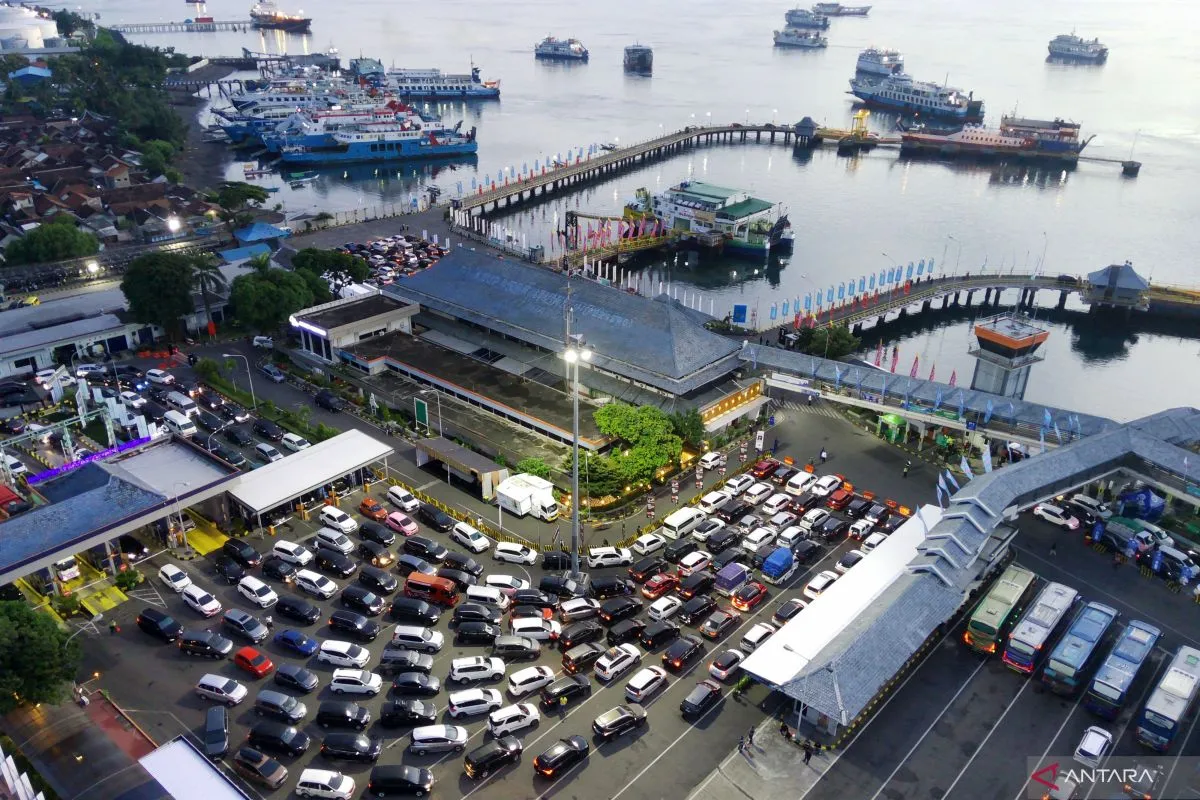 |
| Ketapang port, Banyuwangi (Antaranews.com) |
-
Ferry from Bali
-
Route: Gilimanuk (Bali) ↔ Ketapang (Banyuwangi).
-
Duration: Approximately 45–60 minutes per crossing. Ferries operate 24/7 with departures every 15–30 minutes.
-
Access: From Ngurah Rai International Airport (DPS) in Denpasar, take a shuttle or private transfer to Gilimanuk (around 4–5 hours by car or bus). Ferries are basic roll-on/roll-off vessels (no advance booking needed). Upon arriving at Ketapang, taxis, minibuses, and buses connect to Banyuwangi city (approximately 20 kilometers).
-
-
Liveaboard Cruises
-
Some tour operators offer multi-day cruises along the coast, anchoring at Banyuwangi’s coastal villages and national parks. These are niche experiences typically booked through specialized marine tour agencies.
-
By Air
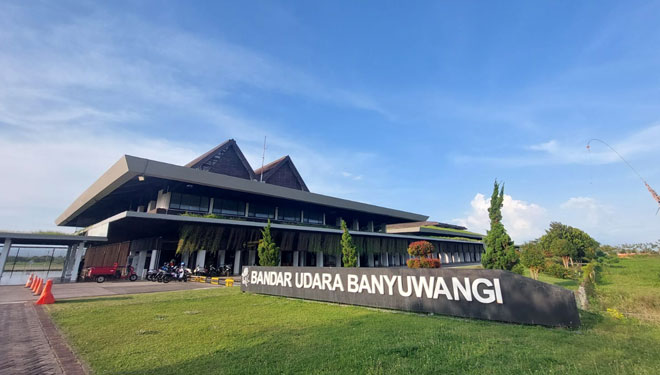 |
| Banyuwangi airport (Timesindonesia.co.id) |
-
Banyuwangi International Airport (BWX)
-
Location: Approximately 15 kilometers west of Banyuwangi city center.
-
Domestic Connections: Direct flights connect Banyuwangi to major Indonesian cities:
-
Surabaya (SUB): Multiple daily flights (Garuda Indonesia, Citilink, Batik Air).
-
Jakarta (CGK): 1–2 daily flights (usually with a layover; check schedules).
-
Denpasar (DPS): Direct flights are seasonal; many tourists opt to fly via Surabaya.
-
-
Facilities: Modern terminal offering car rentals, local cafés, and tourist information desks.
-
How to Get to Banyuwangi from Major Hubs
-
From Jakarta
-
Fastest: Fly CGK → SUB → BWX (total ~3–4 hours, excluding layovers).
-
Scenic Option: Night train from Gambir → Banyuwangi City (sleeper/Executive Class), arriving in early morning; book tickets 30 days in advance through PT KAI’s website or local agents.
-
-
From Bali (Denpasar/Ngurah Rai Airport)
-
Ferry + Land Transfer: Taxi/shuttle (DPS → Gilimanuk, ~4.5 hours) → ferry (Gilimanuk → Ketapang, ~45 minutes) → taxi/minibus (Ketapang → Banyuwangi city, ~30–45 minutes).
-
Direct Flight (when available): DPS → BWX (check for seasonal schedules or charter flights).
-
-
From Surabaya
-
Land: Train Surabaya Gubeng → Banyuwangi City (~7 hours); bus Surabaya → Banyuwangi (~9–10 hours).
-
Air: Direct flight SUB → BWX (1 hour), multiple daily schedules.
-
Practical Tips for Visiting Kawah Ijen and Banyuwangi
| Ijen Crater, a favorite tourist spot for foreigners (Agoda.com) |
-
Best Time to Visit:
-
Dry Season: April to October. Less rainfall means safer trekking to Ijen and clearer views of the crater.
-
Blue Fire Visibility: Blue flames can be seen year-round, but the clearest nights (no clouds) are typically June–August.
-
-
Permits and Fees:
-
Ijen Trekking Permit: Approximately IDR 150,000–300,000 per person (includes entrance fee, parking, and guide). Prices can change, so confirm with local ranger station or trusted tour operator.
-
National Park Fees: Each national park (Alas Purwo, Meru Betiri, Baluran) charges separate entrance fees (typically IDR 100,000–150,000 for foreigners).
-
-
Guided Tours vs. Independent Travel:
-
Guided Tour Advantages: Local guides provide safety equipment (gas masks, headlamps), logistical support (transport, permits), and on-the-ground knowledge. Most international tourists find guided treks to be the most relaxed way to experience Ijen.
-
Independent Travel: Possible for experienced hikers who speak Indonesian or have arranged guides in advance. Always check updated safety advisories and weather conditions.
-
-
Accommodation:
-
Ijen Base (Paltuding, Tamansari village): Homestays and basic guesthouses—best for trekkers who want pre-dawn starts.
-
Banyuwangi City Center: A range of options—from budget hostels to mid-range hotels—located within easy reach of restaurants, markets, and transport hubs.
-
Beach Resorts: Near Ketapang Harbour and Blimbingsari beaches, offering beachfront bungalows and eco-lodges.
-
-
Health and Safety:
-
Altitude Sickness: The summit of Ijen sits at 2,443 meters. Stay hydrated, ascend slowly, and inform guides if you feel dizzy or nauseous.
-
Sulfur Fumes: The crater emits sulfurous gases that can irritate eyes and lungs. Use a proper gas mask (provided by guides) rather than a simple bandana.
-
Local Customs: Banyuwangi is predominantly Muslim, so dress modestly outside tourist sites, especially when visiting villages or attending cultural ceremonies.
-
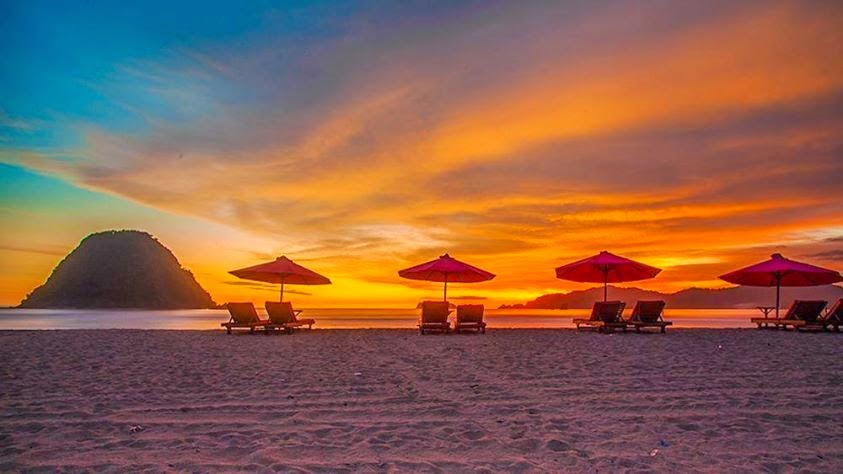




0 komentar:
Posting Komentar